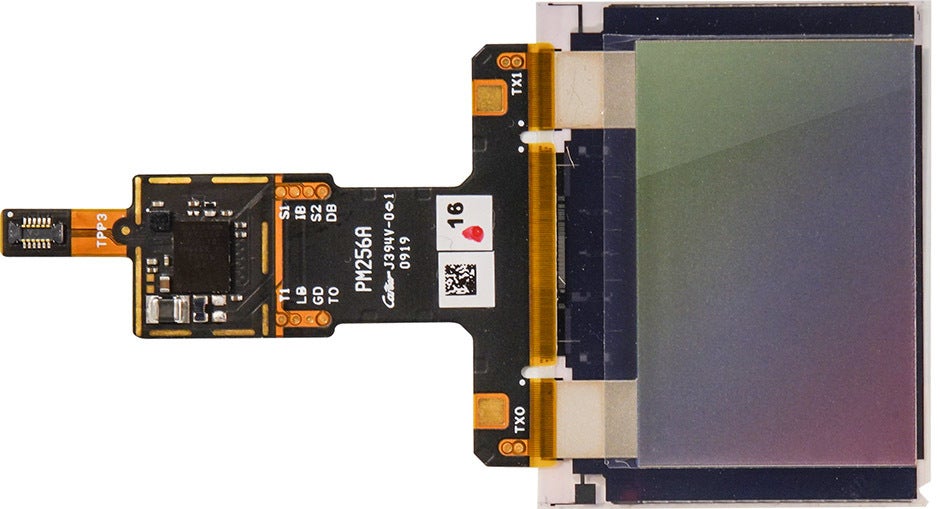With the Note 20, Samsung may right all display and scanner wrongs of the Galaxy S20

What are the main Galaxy S20 series features that Samsung needs to improve on for its future flagships? We found the 120Hz display refresh rate mode to be a battery hog, and the ultrasonic fingerprint scanner to be a bit on the cumbersome side compared to some optical solutions out there.
Well, the supply chain analyst Ross Young is the gift that keeps on giving these days, as he just sat for another interview today, tipping that Samsung may be preparing to right all the Galaxy S20, S20+ and S20 Ultra wrongs in one fell swoop with its summer flagships in the Note series.
Samsung Galaxy Note 20 and 20 Plus display size and refresh rate
While at the beginning Ross tipped that the Note 20 will have the same variable 120Hz refresh rate panel as the Note 20+ was suggested to bring, he subsequently said that LTPS and 60Hz is more likely which would be odd considering that both will be high-end phones. In today's video, however, Ross is again claiming that both will arrive with LTPO panels, so expect a much lower battery hit on 120Hz than what the S20 series offers now.
Samsung Galaxy Note 20 and Note 20 Plus display size and specs:
- Galaxy Note 20 display specs: 6.42" 2345 x 1084, 404 PPI, 19.5:9 aspect ratio, 120Hz with LTPO or 60Hz LTPS
- Galaxy Note 20 Plus display specs: 6.87" 3096 x 1444, 497 PPI, 19.3:9 aspect ratio, 120Hz with LTPO refresh rate
Unlike the Galaxy S20 Ultra, the OnePlus 8 Pro display can be driven with a 120Hz refresh rate at the full 1440p screen resolution, and variable refresh, for instance. How was OnePlus able to do this if Samsung wouldn't for the S20 series, even though the panel is supplied by Samsung?
Well, Samsung didn't splurge on additional hardware components, while the 6.78" panel of the 8 Pro comes with the latest dedicated Iris 5 visual processor from Pixelworks that sits between the display controller and the system graphics chip, and allows to run the display at 120Hz in full QHD+ resolution.
Samsung, on the other hand, has apparently placed a software stack that references various refresh rate levels - from 48Hz to 120Hz - but an automatic refresh rate solution hasn't been implemented for some reason, so the S20 Ultra stays either at 60Hz or at 120Hz at all times.
The OnePlus 8 Pro, however, has automatic refresh that defaults to, say, 120Hz when you are browsing, and drops to 60Hz when you are watching a frame-upscaled video. Thus, it is gentler on its battery in 120Hz mode than the S20 Ultra thanks to the auto refresh rate pick that the software will do, whereas the S20 runs the phone's display on 120Hz at all times.
Since video is usually shot at 24fps or 30fps, the 120Hz refresh can go to waste, but OnePlus used the Iris 5's chip custom motion estimation-motion compensation (MEMC) solution that can upscale lower frame rates to match the higher display refresh. That's exactly what Samsung is preparing to do with the upgraded LTPO panels of the Galaxy Note 20 and Note 20+, according to Ross Young:
Samsung, on the other hand, has apparently placed a software stack that references various refresh rate levels - from 48Hz to 120Hz - but an automatic refresh rate solution hasn't been implemented for some reason, so the S20 Ultra stays either at 60Hz or at 120Hz at all times.
Since video is usually shot at 24fps or 30fps, the 120Hz refresh can go to waste, but OnePlus used the Iris 5's chip custom motion estimation-motion compensation (MEMC) solution that can upscale lower frame rates to match the higher display refresh. That's exactly what Samsung is preparing to do with the upgraded LTPO panels of the Galaxy Note 20 and Note 20+, according to Ross Young:
Note 20 Display Leak:
— Ross Young (@DSCCRoss) May 11, 2020
Note 20 will grow from 6.3" on the 10 to 6.42" on the Note 20. Resolution will increase slightly to 2345 x 1084, 404 PPI, 19.5:9 aspect ratio. 120Hz with LTPO, variable refresh, so lower power with 120Hz, great for always on mode. #GalaxyNote20
Samsung Galaxy Note 20 and 20 Plus in-display fingerprint scanners may grow in size
Another gem in the Samsung Note 20 series supply chain analysis video above is the mention of the eventual in-display fingerprint reader that the Note 20 and Note 20 + may sport.
There are optical fingerprint readers you can tuck under the screen of a "bezel-less" phone, and then there are ultrasonic ones. Qualcomm's second-gen ultrasonic sensor, for instance, was expected to earn exclusivity and selling points way back with Samsung's Galaxy S10 series, but it turned out to be a bit slower and more cumbersome to use than the best optical ones.
That subpar performance subsequently translated to the S20 series, and we ranted about it already, but the Note 20 series may right that wrong, too. Ross is suggesting that Samsung may utilize Qualcomm's latest 3D Sonic Max technology. It was supposed to land in the S20 series, but apparently couldn't be implemented en masse so soon, so it was left for the Note 20 models in the summer.
Unlike the first iteration that only allows users to scan one fingerprint, the 3D Sonic Max offers a recognition area that is 17x larger than the previous generation, allowing for increased security via simultaneous two-finger authentication, increasing the ease of use. Qualcomm also claims that its new fingerprint sensor is faster than the previous generation, but we have yet to hear by how much, and can't wait to pit that tech against the S20 series scanners if it makes it to the Note 20 models.

Qualcomm's latest 3D Sonic Max dual-finger scanner may land in the Note 20
All in all, between the new and improved processors, faster storage standard, and, now, LTPO panels with variable refresh rates that will be gentler on the battery than what Samsung implemented on the S20 series, the Note 20 siblings are increasingly looking like a pretty significant upgrade, and not only over the Note 10 series.













Things that are NOT allowed: